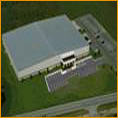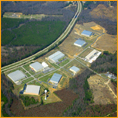2nd Quarter 2016 Hotline
Market Watch
by Joe A. Hollingsworth, Jr.
Some of you may remember our 4th Quarter 2015 Hotline Market Watch article that discussed the new International Energy Conservation Code that is being mandated by EPA, and now the Environmental Protection Agency (EPA) is at work once again seizing property rights from owners of real property. Now the EPA through the Clean Water Act is trying to regulate not just “navigable waters” which used to be the proscribed limit of federal authority regarding water (and incidentally was given to the feds by the states to insure economic benefits by empowering the federal government to prevent practices that would restrict interstate commerce), but now are claiming authority on all tributaries to the navigable waters, including “waters” that are sometimes completely dry. The EPA has incrementally raised the bar for states to comply with the act. “Water quality” is the current focus of costly new regulations. With the new regulations intended to limit the effects of fertilizer runoff from agricultural operations, the job creating developers are being asked to help correct the perceived problem coming from farmers. What used to be simple detention ponds to slow the amount of water coming off of a site after a rain now turns into multi-layered water filtering through proprietary sand mixture that has to be from an “approved” source. These proprietary products without a fully developed competitive market are very expensive and also require large portions of the site be devoted to infiltration ponds that now prevent the site from being developed to the same extent they used to support.
Why is this a hot topic? The cost to install this filtering system and ongoing maintenance for it will be $1.46 PSF to $2.88 PSF above the cost of a detention pond (based on this size and type of construction). The states that are implementing these new standards are finding that companies searching for a new place to do business are becoming very savvy. They are beginning to ask, “What does your water quality regulation cost us?” This is in addition to the tremendous increase just implemented by states that adhere to the 2012 International Energy Conservation Code. The net result of these two requirements flowing from the EPA could be as much as 12%-23% of the total cost of the project.
States that have passed these rules are discouraging developers because of the increased costs to speculate on facilities, so there are fewer new facilities available in those highly regulated states that can attract new businesses. Therefore, prospective industrial clients go elsewhere to a state that is more practical. A country cannot put itself in a position to be uncompetitive in the world marketplace. To create a job and provide a family with a sense of pride should be the highest priority for state and local governments.
For our readers that have significant amounts of existing industrial space (as we have said on this page before), hold on! Some rents are jumping 18% to 26% upon a 3 to 5 year renewal. Scarcity, with limited speculation, is continuing to drive this market. The only part of the speculative market that is active is in million square feet multi-tenant facilities, and now they are having to incorporate the new higher cost due to intensified regulations. Also, general speculation on smaller facilities has become less cost-effective. So, think carefully before you sell an income producing property where the rents could jump substantially.



